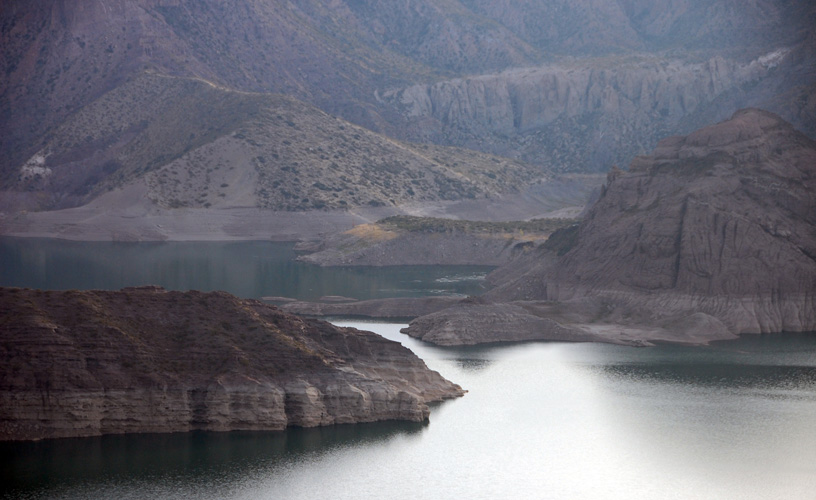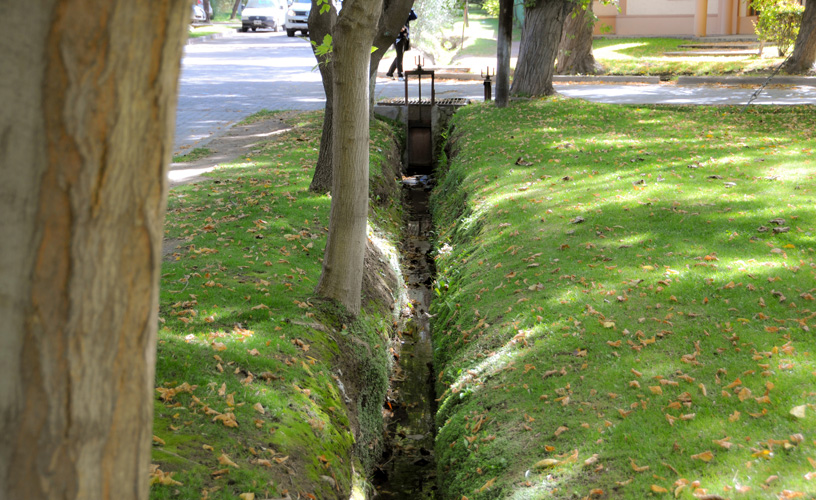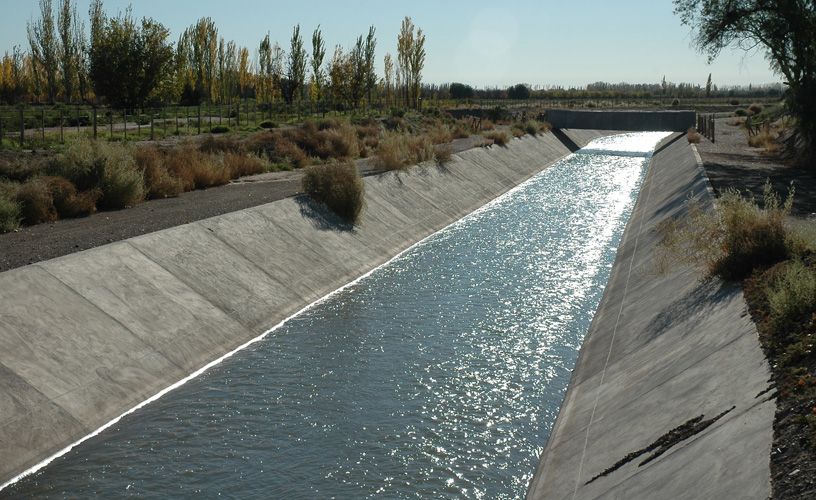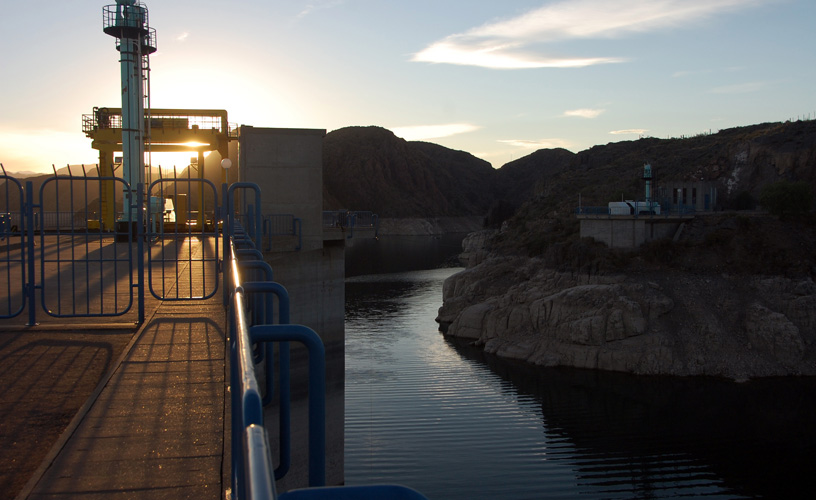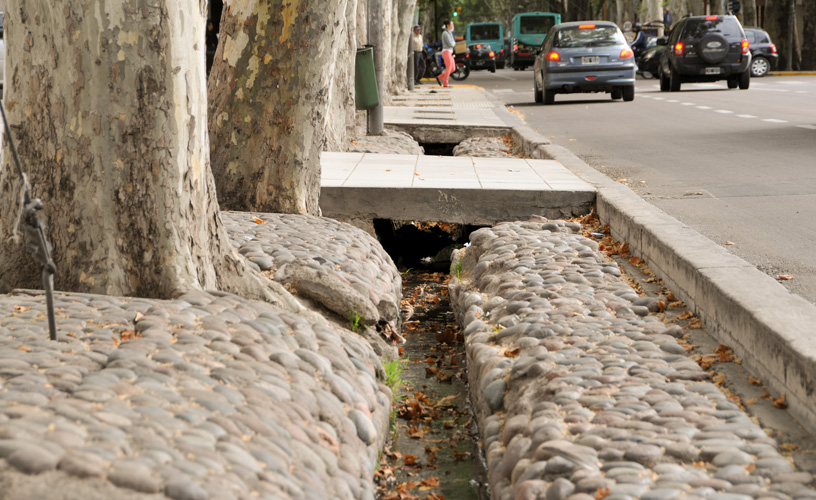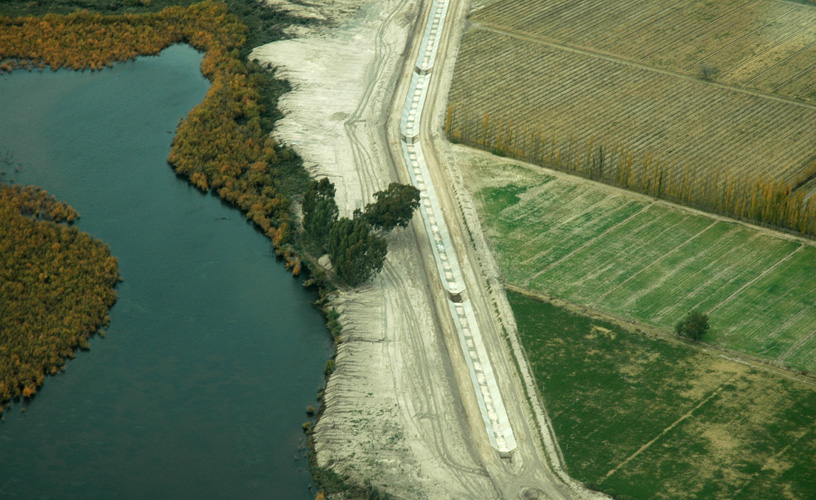Mendoza would not be what it is today if hundreds of people had not set themselves to think about what they should do with water. A story that makes everyone fall in love with this province.
City.’ The constant flow of water is now controlled by strategically located gates that are opened for certain periods of time, depending on the water allocation – or the agreed volume of water that corresponds to a particular water use. The slope of the terrain does the rest of the work, as gravity pulls water with a constant flow to run through the city and, more importantly, along the roots of the aligned trees. However, the functioning design of this water infrastructure was not successful in the beginning. Stagnant water in some sections of the city used to invade the air with foul odors, and this was thought to cause diseases.
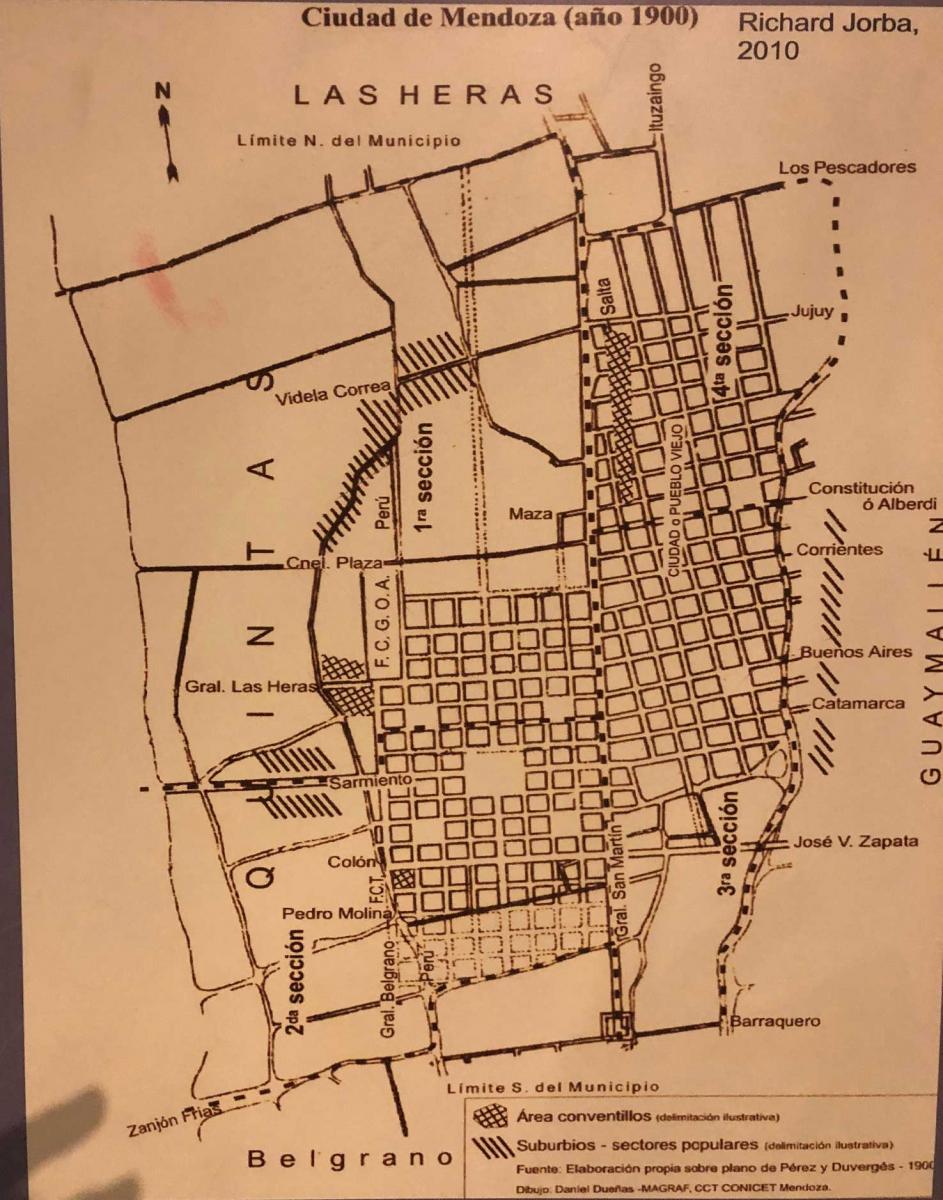
Museum)
To correct this flaw, the design standards for Mendoza have been changed by trial and error over time. Nowadays, the acequias work for the most part (carrying flowing water), except when there is a flood event, or when the acequias are blocked by trash that nowadays includes plastics. Innovation is needed to address these remaining design issues.
The story of green space in Mendoza goes back to pre-colonial times when the indigenous people, the Huarpes, dug the original acequias to direct surface water from the Mendoza River (and other rivers) to irrigate agricultural fields. Located in a semiarid region, Mendoza is fortunate to have a relatively reliable source of surface water that comes from snow melt in the Andes mountains. When the Spaniards arrived in the 16th century, they destroyed most of the indigenous culture, but not the acequias. They recognized the value of this type of water infrastructure that allows human life in the desert. The Spanish conquistadores (conquerors), maintained and reorganized the acequias so that these continued to supply water to Mendoza.
On 20 March 1861, a disaster hit the city. A powerful earthquake hit Mendoza and destroyed most buildings, a fire consumed the few buildings that were still standing, and obstructed aqueducts caused flooding. This original area of Mendoza is now known as ‘La Ciudad Vieja’ (The Old City). ‘La Ciudad Nueva’ (The New City) was built in 1863 along the property line of the old Hacienda San Nicolas—a neighboring farm located on slightly higher ground. The design of this modern city addressed public health concerns about toxic air, that was thought to cause diseases, by opening streets to air and light. Although nowadays the streets are sometimes completely shaded by the tree canopy cover, back then, the trees were not fully grown, and sunlight filled the streets of Mendoza. The new urban design also incorporated infrastructure for different modes of transportation and water systems—potable, stormwater and wastewater. The new city is characterized by the features that we find today in Mendoza including the tree-lined streets, plazas, parks, boulevards, and of course, the acequias.
“Think water” could as well be the title of this article. The truth is that the Province of Mendoza was once a desert. It was the inventiveness of visionary men that led it to become the oasis we know now. Here is how it happened.
Even the first dwellers of these lands knew how important it was to make the most of the water they could obtain. Ever since, it all depended on learning from the past and the new changes to come.
Shortly after the foundation of the City of Mendoza, back in 1566, the use and care of the irrigation canals used to be regulated as functions to be carried out by the Cabildo.
The position of Alcalde de Aguas (something like a Water Mayor) was created in 1606. This was the first authority in charge of the irrigation and distribution of water. Then, it was the Spaniards who appointed the other authorities in charge of irrigation.
Once Argentinian independence was secured, the Governor of Mendoza, Pedro Molina, passed a regulation for tasks and the creation of the positions of tomero general and teniente general de aguas. This system has improved with the advent of new technologies and knowledge.
Towards 1894, the General Irrigation Department was created. After some modifications, it came to represent the origin of the present General Irrigation Department, which is responsible for all surface irrigation basins and the inspection of groundwater exploitation for irrigation.
Who could have been initially behind these canals?
This peoples?


